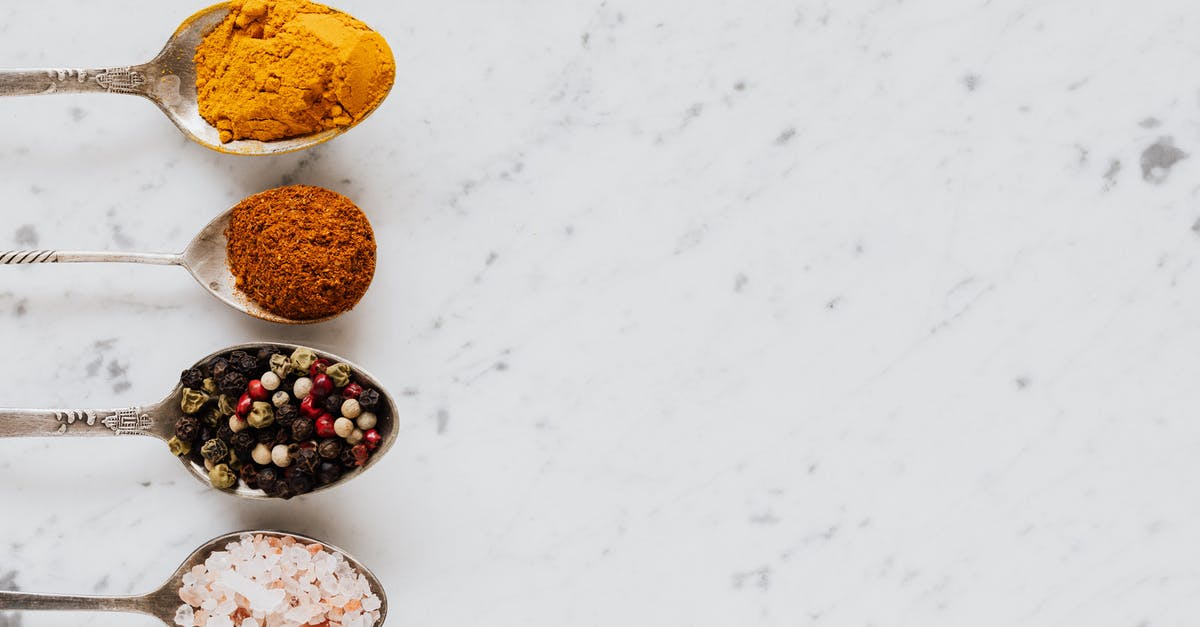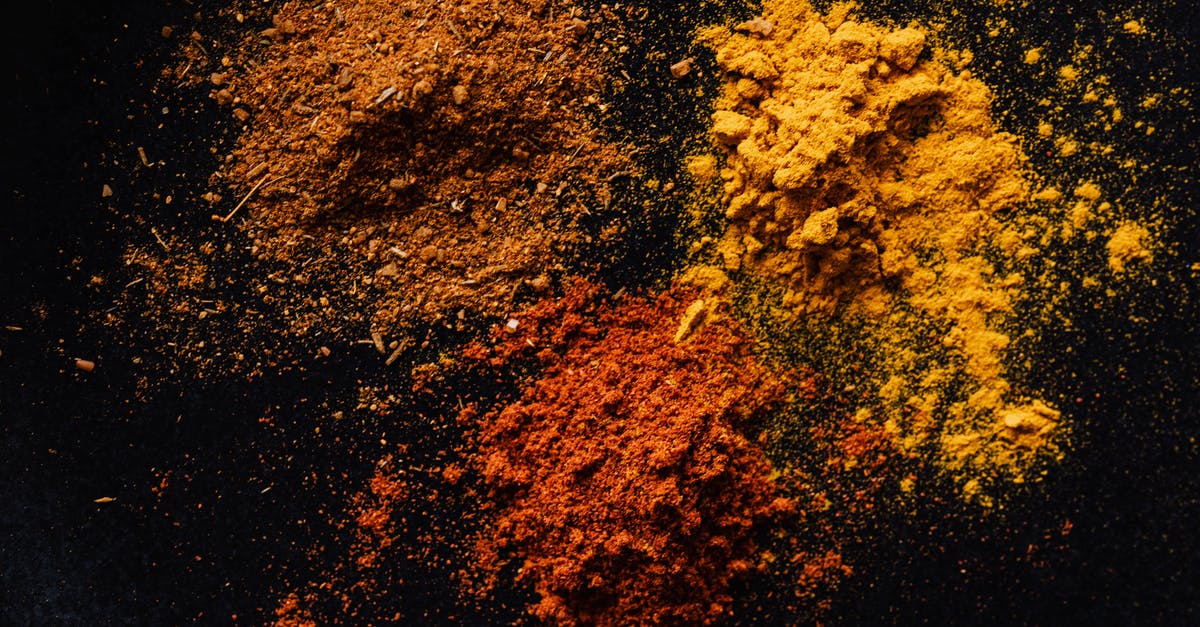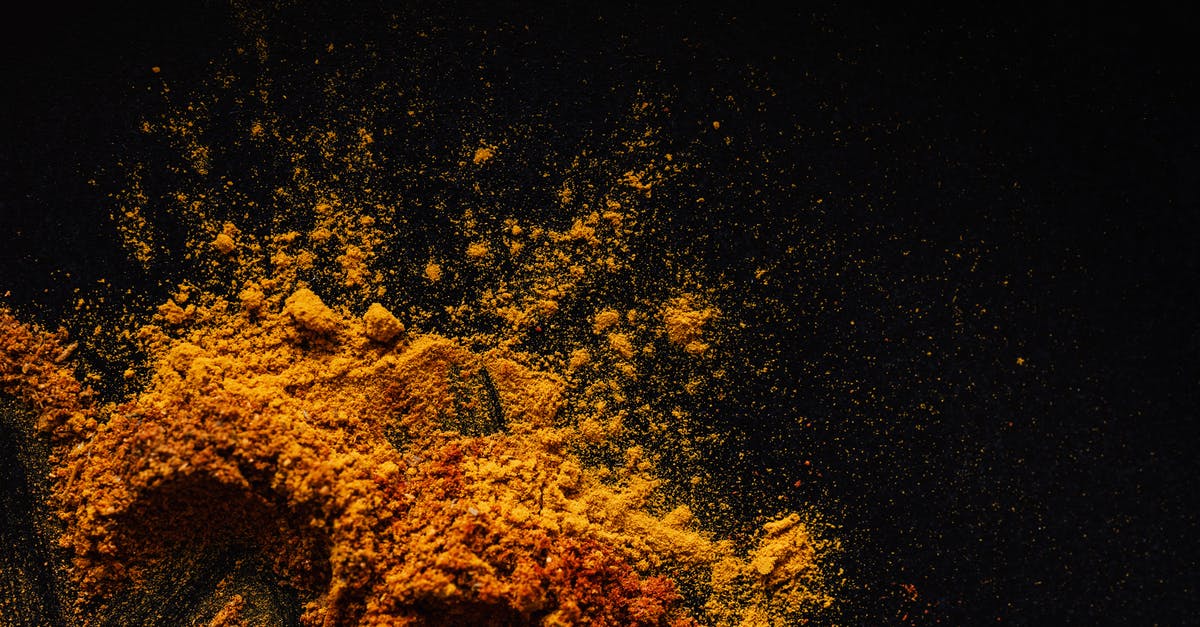Spice blends have no flavor?

I recently purchased a local taco spice blend (basically: chili pepper, paprika, garlic, cumin and oregano) but it tastes bland when I cook with it. In fact, I often find this when I try to use spice rubs (even mixing things from my spice cabinet) on meat.
What is the right technique to maximize flavor?
For example, I will take my chicken breasts, coat it in the spice mix, and add a little bit of oil and salt. From there, I'll cook in the pan. Food comes out under-seasoned, and I don't really get any of the flavors/aromas that I'd expect.
When I use store-bought seasoning, like this one, I always get a better result: good flavors, good "stickiness" to the food. Or, when I use a glaze (eg, a char siu sauce) then I'm able to get great stickiness, coating, and flavor.
Is there a trick to getting home made blends and seasonings to "work" on meat? Seems like just mixing and sprinkling on are not sufficient!
Best Answer
Salt
TL;DR,
The ingredients you list in your local spice blend doesn't include anything that would primarily hit the salty, sweet, sour, bitter, or umami tastes. The commercial product you link to has ingredients that hit four of those five tastes. Primarily, you probably need to use a bunch more salt, and maybe a touch of something sweet, sour (acidic), and/or umami. In nearly all cases, commercial products taste better because they are heavily salted--but depending on your personal taste & palate, you might also be missing some of the "background" flavors brought by other ingredients.
The product you identified as consistently giving good results has this ingredient list (Ingredients are listed in order by the amount of each item--that's important to remember):
Yellow Corn Flour, Salt, Maltodextrin, Paprika, Spices, Modified Corn Starch, Sugar, Citric Acid, Yeast Extract, Natural Flavors, Silicon Dioxide.
You can look at this ingredient list to get a better idea of differences between what you might be putting together at home, compared to this product that you know you like. Hopefully, by looking closely at the one you do like, it will help you identify what you're missing (and why) from the other mixes that fall short.
Yellow Corn Flour
You'll notice the first ingredient is corn flour (corn starch is also listed separately further down). In the context of taco seasoning, this is a binder & thickener for the "sauce" that coats the meat. But you'll often see starches & flours used as a sort of binding "glue" to help seasoning stick to the (wet) surface of food.
Salt
The second ingredient is salt. This means that there is more salt than any other spice or seasoning. Salt is a fairly critical ingredient to make food taste like itself. This is why "a pinch of salt" is so ubiquitous in recipes, even for non-savory things. If you're finding that you use a bunch of spices, and it still tastes bland, my first guess is always that you didn't use enough salt. There are some alternative methods, but when comparing homemade spice blends to commercial spice blends, it is almost guaranteed that a major taste difference is that commercial spice blends have a lot of salt.
Maltodextrin
Maltodextrin is another bland-tasting ingredient that serves as a binder or thickener, rather than a flavoring.
Paprika, Spices
Finally, the 4th & 5th ingredients represent the actual "spices" that make up this taco seasoning. These two ingredients alone represent the entire list of ingredients you noted on your local taco seasoning mix (chili pepper, paprika, garlic, cumin and oregano).
Modified Corn Starch
More binding/thickening.
Sugar
Sweet is another "base" taste, where a little bit of sweet can make other flavors "pop". This is another spot where adding just a little sugar to homemade spice blends can help them taste more like commercial products you love.
Additionally, it seems that Americans love sweet things, so this pops ups in most commercially available products in US groceries, especially seasonings & condiments. Sugar can also help with browning, and as it melts (around 367°F), it will get sticky.
Citric Acid
Salt, sweet, and acid (which is sour) are three of the main "base" flavors, and this item in the ingredient list brings the third one into the packet. Having all three in the right proportion can help food taste well-balanced or "well-rounded". At home, a squeeze of citrus juice, or splash of vinegar can replace citric acid in commercial products.
Yeast Extract
This bring umami to the party. Umami is another "base" flavor, which is usually described as "savoryness" or sometimes "meatiness" (many sources of umami are not meat, so while I don't love that description, many people find it helpful). Yeast extract has glutamates, which are the food science word for the compounds that taste umami (like the way sugars taste sweet). Another popular glutamate is monosodium glutamate (MSG), but many manufacturers shy away from including MSG on the label because of it's (IMHO unfounded) reputation. You can get yeast extract or MSG for your home spice cupboard if you're missing that background hit of umami from this.
Natural Flavors
There's a long list of things that this could be, but most likely they are just very small quantities of things that are tasty.
Silicon Dioxide
This is another utilitarian ingredient, rather than a flavorful one. It is an "anti-caking agent," which just means that it keeps your spice blend from clumping together. Spice blends that don't contain anti-caking agents tend to stick together, and you get one big lump, particularly when the air is humid.
Pictures about "Spice blends have no flavor?"



What spice has no flavor?
What spice does not have any flavor or aroma? A stale, old one. The flavors in spices are volatile\u2014 they don't last forever. The technical term for this is "trash".Why do spices have no taste?
Our bodies detect spice using a completely different system than the one for taste. The trigeminal nerve, which is the part of the nervous system that sends touch, pain, and temperature feelings from your face to your brain, interprets it. In this way, spicy isn't a taste so much as it is a reaction.How do you taste spice blends?
Spices can add new flavours and aromas to your cooking without added fat, sodium or calories. Experiment with the different spices to see what you like best.My 3 Favorite Spice Blends | Low Calorie Cooking Basics
More answers regarding spice blends have no flavor?
Answer 2
Spice blends are made from ground spices (which oxidize and lose volatile aromatics very quickly), occasionally salt, and a lot of fillers..sometimes yeast extract and/or MSG for umami...maybe some sugars. They are not really "home-made." Since those mixes are often mass produced, the raw products are frequently inexpensive, and so not of the best quality, and who knows how long the spices have been in their ground state. They are further made more affordable (profitable) by being bulked with additives like maltodextrin, which is harmless but doesn't add flavor.
If the spices in your cabinet are already pre-ground, you might experience the same blandness. Ground spices simply lose their flavor and aroma very rapidly.
You will usually have much better results purchasing whole spices, grinding them yourself as you need them, and mixing your own blends. The flavor difference can be quite dramatic. In fact, you might be surprised at how well they "work", as you put it.
Answer 3
To keep it short: you cannot reproduce the taste of a lab-made seasoning product at home.
The seasoning you are referring to is not made from spices. When you look at the ingredients, you will see:
Yellow Corn Flour, Salt, Maltodextrin, Paprika, Spices, Modified Corn Starch, Sugar, Citric Acid, Yeast Extract, Natural Flavors, Silicon Dioxide
Most of the aroma you are smelling in the commercial seasoning was made in a lab (the "natural flavors"). It seems that this is a common misconception, but by legal definition, they can take basically any living being (plant, animal or microorganisms), and use a number of chemistry techniques (although, apparently not de-novo synthesis - corrected from a previous version of the answer) to get any compound that they are interested in, as long as it changes the flavor/aroma, and this goes on the label as "natural flavoring". For detail, see CFR Title 21, section 501.22 (a) (3) for US law; European law is very similar here.
From the look of things on the ingredient list (plus your observation that how the flavor differs from actual spice blends), they created compounds which have extremely strong aroma, and used maltodextrin as the solid "foundation" onto which to load the aromas in a concentration that is edible, but still much higher than what is found in actual spices. Not only do you get a higher concentration that way, but my layperson impression is that the aroma is more readily released from the maltodextrin (into which it is just soaked) than from actual spices (where it is usually behind layers of desiccated membranes).
There isn't much you can do to achieve this effect. You can always use larger amounts of standard spices, and make sure that you are using the freshest possible spices, but the aroma will always be more muted.
The other relevant ingredients are the yeast extract and the salt. The yeast extract is used because it is rather rich in MSG. If you want to get closer to the commercial seasoning, the easiest way is to buy pure MSG and add it. The other ingredient is the salt, which you are probably already adding anyway - but you will have to experiment to find out what amount is optimal for your taste.
I don't think that the sugar and citric acid are especially relevant here. They are rather minor by amount - each of them is less than the sum of all non-paprika spices. I don't know if they are used for taste or for other purposes, but if it is for taste, the contribution will be rather minor. I wouldn't try to add them when making a homemade rub.
Answer 4
I'll just add some suggestions on top of other excellent answers.
(1) You may want to try mixing seasonings (including "flavor enhancers" others have mentioned, especially salt) with corn starch, using it to coat some meat (the smaller the pieces the more surface area you'll get), and frying it. I personally love to do that with this on chicken. Note that this seasoning packet contains a LOT of salt. Experiment to get the balance right, but I would go for something like 1 part seasoning to 3 or 4 parts corn starch. Too much corn starch will dilute it too much. Too little and it will come out too salty.
(2) Try coating your meat with a bit of fish sauce. This stuff is pretty easily accessible at most major grocery stores. Note that not all fish sauces are the same. It will smell very fishy out of the bottle but that smell will go away once cooked, leaving plenty of umami and saltiness (most fish sauce is very salty). I find thinly sliced pork marinated in a bit of fish sauce and stir fried is great.
Sources: Stack Exchange - This article follows the attribution requirements of Stack Exchange and is licensed under CC BY-SA 3.0.
Images: Karolina Grabowska, monicore, Karolina Grabowska, Karolina Grabowska
